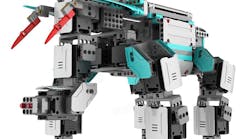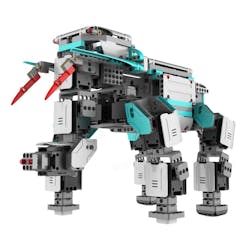I had the privilege last week to attend the 113th International North America Toy Fair in New York City. For me, the show is a personal thrill to attend. As I have mentioned in a previous blog, I partially owe my pursuits in engineering to the toys I owned growing up. I was amazed to see the amount of STEM and STEAM toys at the fair this year. I had attended the show last year, but in just one year I would say that the amount of STEM-focused educational toys doubled. But what is even more surprising is how many engineering concepts I saw in today’s toys.
Right before attending the Toy Fair, I was in Anaheim for the Pacific Design Show. Many companies in attendance had on display their new lines of products and this year robotics was a dominant theme, along with 3D printing and assembly automation. At the Pacific Design Show, there were pick-and-place robotic arms like Baxter and Swayer from Rethink Robotics, programmable collaborative robots like the robotics arms from Universal Robots, and autonomous robots like the ones from Omron. So when I got back from Anaheim and headed to the Toy Fair in New York, what did I see but the same exact technology in kids’ toys?
There were toys that had the same program functions as a Universal Robot, allowing for place and record movements via a tablet app. In today’s toy market, there are robotic arms, modular robotic assemblies, 3D printing toys, code-teaching robot games, and autonomous robot toys. In particular, the Jimu robot from UBTECH impressed me the most.
This robot is completely collaborative. The child is placing the robot in specific positions and recording them via their tablet. The robot then interpolates the required transitions between positions to reach the end of its programming. This style of toy is teaching kids how to program modern robotics like Universal Robots’ robotic arms, which is programmed using the same exact method.
The reason I’m so impressed is that these are fundamental engineering principles being taught at a younger age than I was exposed to them. I always played with LEGOs, K’NEXs, Erector Sets, etc., and each included engineering fundamentals naturally built into them. But none of them explained gear ratios or how to define torque like the Motorblox Vehicle Lab from Smart Labs or how to build my own electric gadgets like littleBits does. The new generation of toys not only entertains, but is focused on showing kids the governing engineering formulas and principles that make those toys tick.
And ultimately the goal is to have kids be familiar with engineering principles at a younger age so that when they encounter more complex STEM ideas, they are not afraid. One of the reasons many students leave engineering majors in college is due to the overwhelming nature of the material. Yet if they are exposed to STEM and engineering concepts earlier on in life, they will be more likely to stay and help create a new wave of young engineers.


